
Do you know there are a variety of chickens that lay colored eggs? The colors of eggs may be blue, green, purple, pink, brown, or chocolate.
If you put these different colored eggs into a basket, the shells will resemble a rainbow.
Typically, chickens will lay eggs with different colors due to differences in their genetic codes. There is nothing to be worried about.
There is much more to find here, as one can have an in-depth understanding of colored egg-laying chicken breeds. It’s not about the tan and white colored egg-laying breeds which are commonly seen in daily life.
But before that, we want to tell you that we didn’t find any hen that lays purple-colored eggs.
Some Important Facts about Chicken Colored Eggs
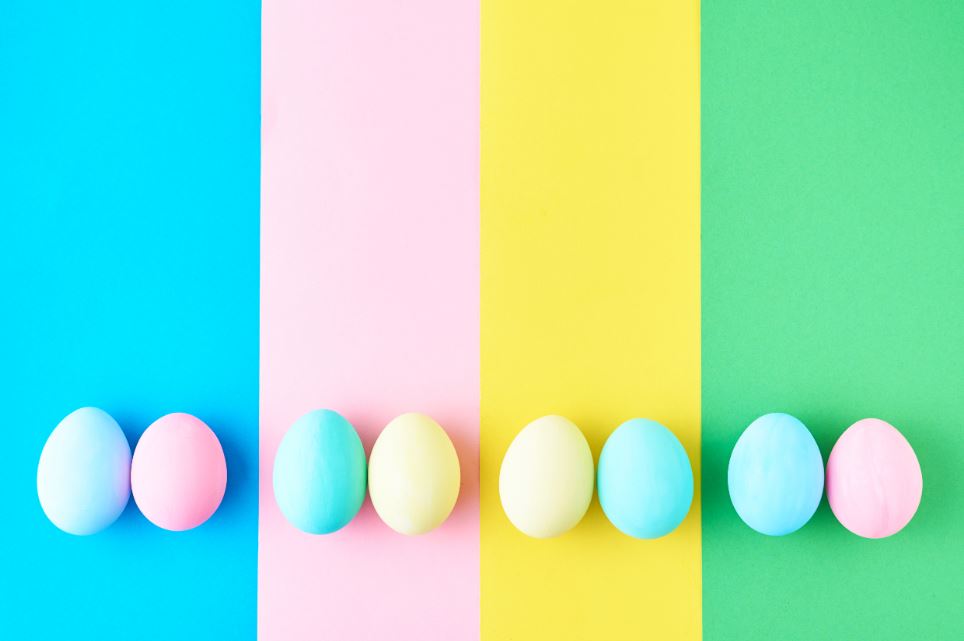
Every chicken breed lays a specific colored egg. The color of the eggshell does not affect the egg’s nutritional value.
You can determine the eggshells’ color by checking the chicken’s earlobes. Hens with white earlobes tend to lay white or tan-colored eggs. However, this method is not always accurate.
This earlobe rule may not work on Easter Eggers and hybrid chicken breeds, which lay different colored eggs on your farm.
At the start of the laying cycle, the egg color may be deep, which gradually fades. For example, if a chicken lays a deep pink egg, it will lay a light pink egg at the end of the cycle. Hence, you may see different egg color shades on extra days.
You should ensure only one hen can always lay the same egg color.
Interestingly, all white chicken eggshells are white from the inside and outside; brown eggshells are brown from the outside and white from the inside.
Further, blue eggshells are blue from the inside and outside, whereas green eggshells are green from the outside and blue from the inside.
Also read: 10 Types of Black Chickens
Types of Chickens that Lay Colored Eggs
So, let’s start the list of a few chickens that lay colored eggs.
Chickens that Lay Blue Colored Eggs
Blue eggs look beautiful. Mainly four chicken breeds lay blue-colored eggs: Araucana Chickens, Ameraucana Chickens, Cream Legbar Chickens, and Easter Egger Chickens.
So, let’s understand these blue-colored egg layers in detail.
1. Araucana Chicken

The Araucana chickens lay blue-colored eggs. Other chicken breeds that lay blue eggs contain Araucana in their genes. This breed originated in Chile, and its ancient history is still unknown.
This is one of the costliest chicken breeds because of its blue-colored eggs. People love to raise Araucana chickens.
They do not have a tail head (rumpless), and on both sides of their heads, they have an elastic thread-like skin with tufts of feathers. So, if you have the original breed of Araucana, then it is always Rumpless.
Ameraucanas and Easter Eggers also look like Araucana chickens because of their similar genes. So, when choosing an Araucana, sometimes things may go wrong if you choose other breeds.
Araucana hens lay about three medium-sized blue eggs weekly (160-180 yearly). Seeing the size of eggs a small chicken breed produces will amaze you.
The regular-size Araucana males weigh about 3 kg, and bantam weighs about 800 gms, whereas regular-size Araucana females weigh about 2.5 kg and bantam weigh 700 gm on average.
Hatching on a backyard farm is very hard for its genetic problems. If you wish to purchase Araucana chicken, they are unavailable from any hatchery.
Because of its chick mortality rate, most hatcheries don’t incubate their eggs. You can only find this chicken breed with some experienced breeders.
2. Ameraucana Chicken
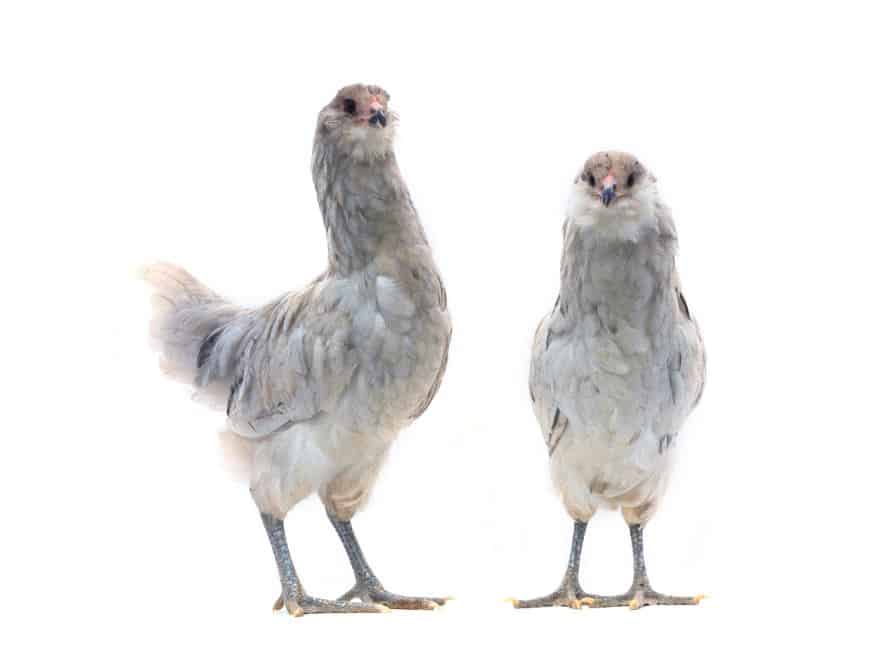
The Ameraucana chickens also lay blue-colored eggs. Its name is like Araucana, but don’t get confused between them.
But Ameraucana contains genes of Araucana chickens, but it was correct with these. As we already told you, Araucana chickens have high chick mortality during incubation, but this problem is solved in Ameraucana breeds.
The cheeks of Ameraucana are puffed out and look very colorful. This chicken breed has cool black, white, blue, brown-red, blue wheaten, and silver color palettes.
Male Ameraucanas weigh about 3 kg and female Ameraucanas about 2-2.5 kg, whereas the Bantam male Ameraucana weighs about 800 gm and female Ameraucanas about 700 gm on average.
Ameraucana hens lay about 250 blue eggs per year. Every so often, you may see bluish-green colored eggs.
3. Cream Legbar Chicken
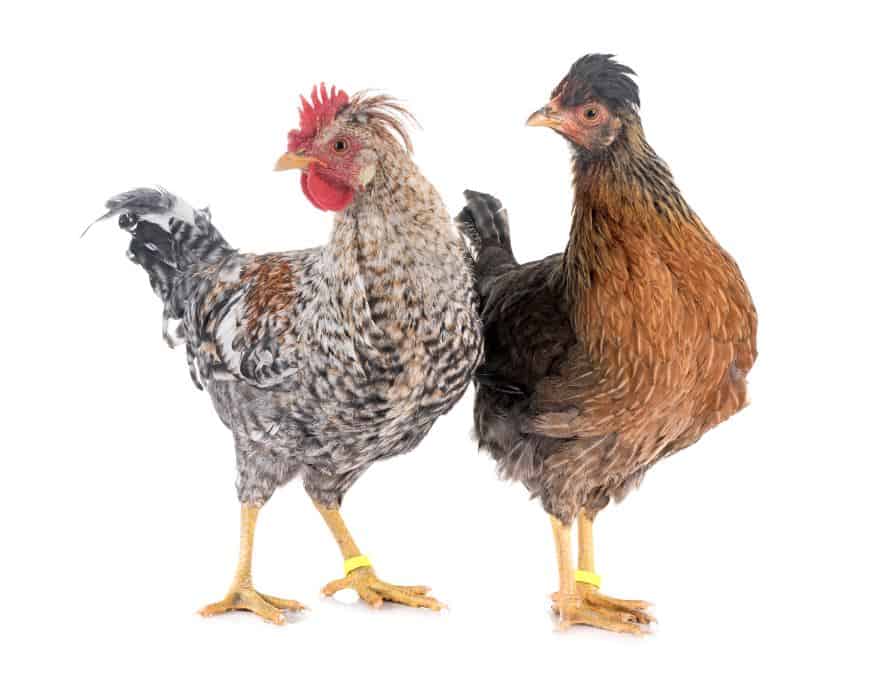
The Cream Legbar is one of the most popular chicken breeds in the United States. It is an over 100-year-old breed of chicken.
They are medium-sized chicken breeds that look triangular and like to move free-range. They are very cool.
If you want to raise a blue egg-laying chicken, then the Cream Legbar is a perfect breed.
The Cream Legbar is a cross between Leghorns, Cambars, Barred Plymouth Rocks, and Araucanas. Because of the Araucana chicken gene, the color of Cream Legbar eggs is light blue and blue-green.
A Cream Legbar hen lays about 200 eggs a year. A male Cream Legbar chicken weighs about 3-3.5 kg, and a female is about 2-2.5 kg.
4. Easter Egger Chicken

It is also the most popular chicken in the United States as a backyard free-range chicken. This breed carries the genes of Araucanas and Ameraucanas.
So, most of the Easter Eggers chickens also lay blue-colored eggs, but some lay eggs of other colors. But these Easter Egger chickens are popular for their different colors of eggs and plumage.
Most of the Easter Egger chickens are rumpless. Because of the genes of Araucanas and Ameraucanas, they do not have a tail.
You may see tails on a few Easter Eggers because people breed them with other chicken breeds. There is no specific color for Easter Egger chickens. They are multicolored birds.
Easter Eggers are good layers. Hens lay about 280 eggs per year. The average weight of males is 2.5 kg, and that of females is about 2 kg.
Chickens that Lay Green Colored Eggs
Did you ever wish for a green egg that’s not rotten? You’ll be involved with this one chicken breed, which primarily lays green eggs.
Here, mainly three chicken breeds lay green-colored eggs: Olive Eggers, Ice Cream Bars, etc. Let’s get more detailed information about such green eggs.
1. Olive Egger Chicken
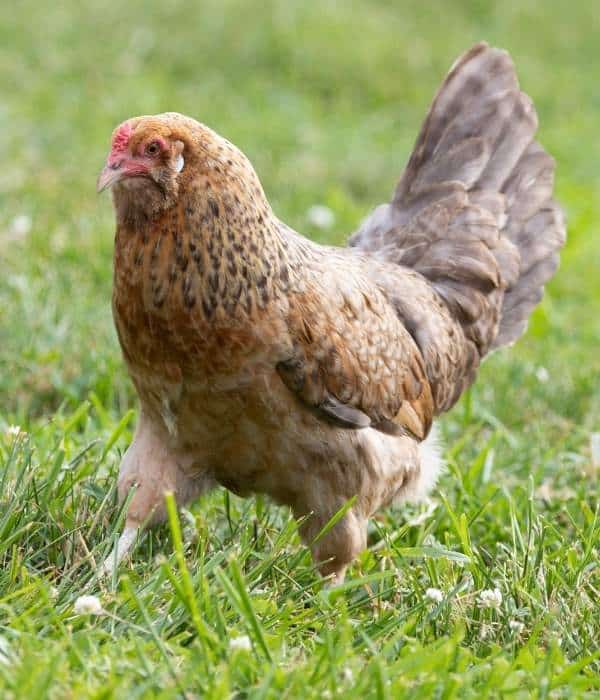
Olive Eggers are a hybrid chicken breed that combines Legbars, Marans, or Ameraucanas. Because these are interesting and beautiful chickens, the primary reason for buying Olive Eggers is to get olive-colored eggs!
Getting a colorful assortment through your egg cartons is an excellent way for your clients to create value at a low cost.
Such Olive Egger chickens will look slightly different as they lay all colored eggs of olive green. The shell’s inside is bright green, and the outside has a translucent brown covering over the green, making it olive.
We hardly find such birds throughout all areas of the country. The Olive Eggers are great layers, laying approximately 180–200 large eggs yearly.
Olive Eggers are stocky, medium-sized chickens, often with pea combs or muffs that add to their curious appearance and bearing.
The average weight of roosters is around 4.5 lbs, 3.5 lbs for hens. Similar to Easter Eggers, such chickens are crossbred.
They have unique patterns for them, but they lay eggs from olive to camo green at any time. Olive Eggers are a neat addition to every backyard flock, to say the least.
2. Ice Cream Bar Chicken
Ice Cream Bars are a cross between Isbar and Cream Legbars. They are green egg layers. Many owners know their eggs are teal-colored and blueish-green, so the shade depends on the specific hen.
Such birds are bred primarily for looks but for many reasons in contemporary agriculture on small-sized, sustainable farmlands. They lay suitable eggs, usually 150 to 200 per year.
Swedish Isbar Chickens are clever, smart fowl. They are quite vigilant towards predators or good foragers. They are also very friendly to humans and interactive.
In the mid-twentieth century, a Swedish Isbar Chicken was established as part of the larger genetic poultry initiatives of a Swedish priest named Martin Silverudd. Those birds were first introduced to the United States in 2011.
Swedish Isbars are chickens of medium weight. They were also short-legged and had a broad body. Cockerel mass: 5.5 lbs., Pullet 4.5 lbs.
Also read: Swedish Flower Hen Chicken
Chickens that Lay Pink and Cream Colored Eggs
You cannot see pink eggs very much, or they look nice. If you’d like to get this color through your flock, you’ll have to check these breeds out:
1. Light Sussex Chicken
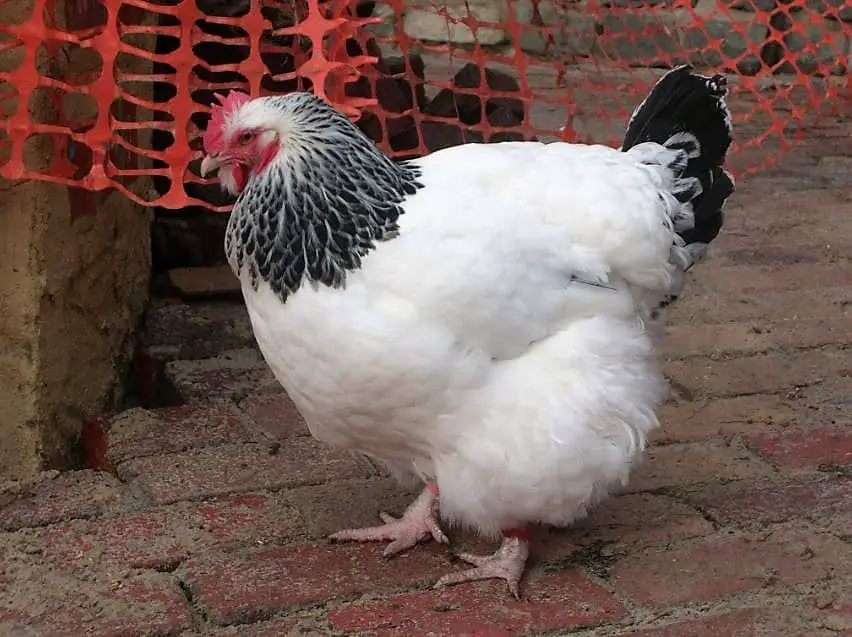
A Sussex is a British, dual-purpose chicken breed raised both for its eggs and meat. Both standard and bantam fowl are available in 8 recognized colors. In 1903, the Sussex Breed Club organized a connection of breeds.
The Sussex chicken is elegant with a long, broad, flat back; a long, straight breastbone; wide shoulders; and a rectangular construction. The tail should be held from the body at an angle of 45 degrees.
Throughout the darker variants, the eyes are red. However, the lighter ones are orange.
The comb is single. Its earlobes, as well as the legs or skin white, seem red in all varieties. Roosters weigh approximately 4.1 kg, and hens approximately 3.2 kg.
Sussex was traditionally raised for meat consumption as a table bird. The breed was one of the main breeds maintained for this reason throughout the 20th century until new hybrid lines displaced it. We can keep it as a bird with both eggs and meat use.
Hens lay about 180–200 tan-colored eggs annually; some layer strains may yield up to 250. Eggs weigh around 60 gms on average. A Sussex is also brought up for sowing.
2. Asil or Aseel Chicken
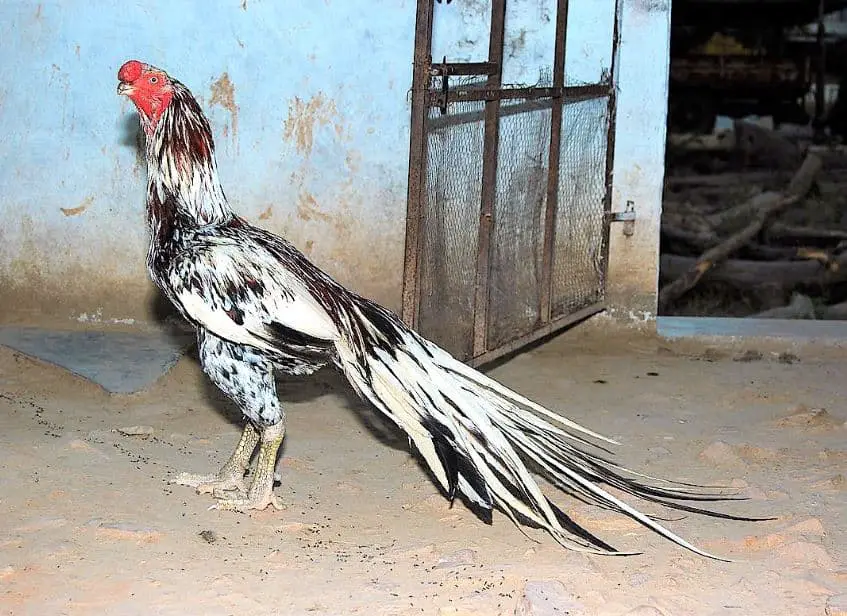
Aseel Chickens (Asil) have been used for cockfighting for the first time and can be considered fighting roosters. In a few Asian countries, they are popular as fighter chickens.
Aseel is notorious for his pugnacity. When the baby chicks are only a few weeks old or mature, they frequently fight to the death. Hens can be quite aggressive toward one another, too.
Furthermore, there are hen-feathered Asil (Aseel), understood as Madaroo; we find this in different colors, but the roosters come in hen-colored feathers, have little sickle feathers throughout the tails, or miss the big hanging feathers mostly on the saddle. It’s a very rare wide range.
The hens aren’t good layers, but they are excellent sitters. Laying varies depending on the Asil variety; small Asils are poor-laying birds. They occasionally lay only 6 eggs yearly, whereas the larger Asils lay approximately 40-50 light-brown eggs yearly.
3. Dorking Chicken
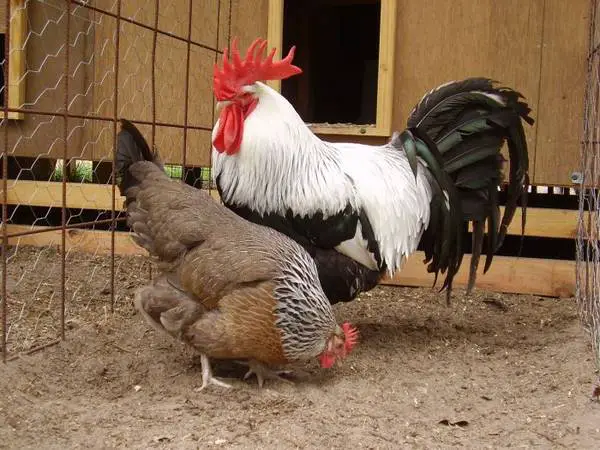
A Dorking is a domestic chicken breed of British origin. This name comes from Dorking Town, located in the south of England, specifically Surrey.
The Dorking is one of the oldest chicken breeds in Britain. It’s sometimes been recommended that it derives from 5-toed chickens brought by the Romans to Britain during the first century AD.
A Dorking’s body is rectangular and has short, five-toed legs. Like all single-comb breeds, comb points may need to be protected during freezing temperatures.
Dorking chickens are very well established and are used for egg or meat production due to their versatility. It is one of the few red ear lobe breeds that produce a white-cream-shelled egg. Some breeds also lay tan-colored chickens. The color of the skin under the fur is white.
The weight for roosters is 4.55–6.35 kilograms (10–14 lb), for cockerels 3.60–5.00 kilograms (8–11 lb), or for hens 3.60–4.55 kilograms (8–10 lb). Five different color varieties of Dorkings are white, silver-gray, red, dark, and cuckoo.
4. Yokohama Chicken
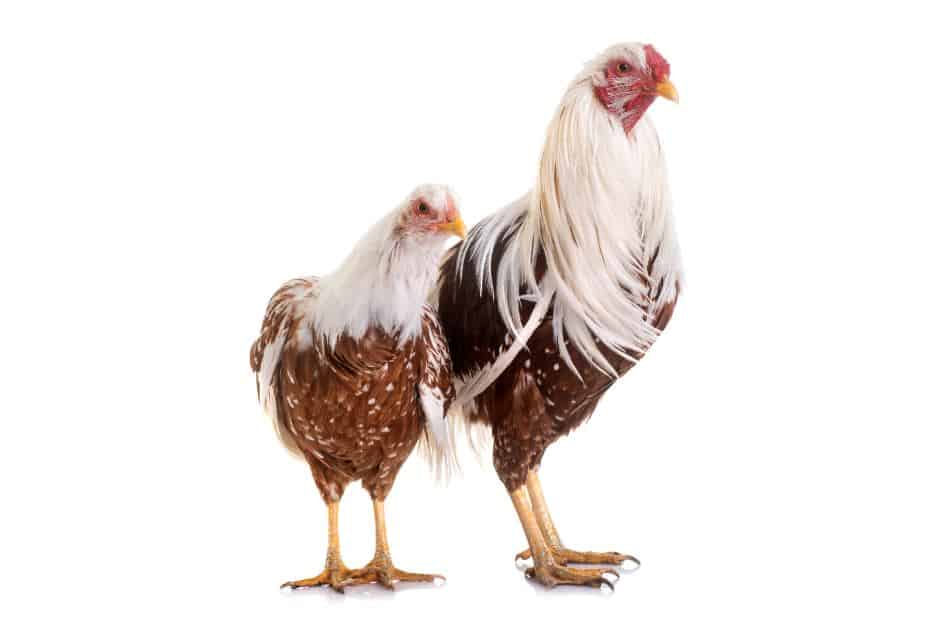
A Yokohama is a fancy chicken breed from Germany with unusual coloring but very long tail feathers. These were formed by Hugo du Roi in the 1880s or originated from ornamental birds carried from Japan to Europe during the latter half of the 19th century.
A Yokohama is a small chicken with an exceptionally long tail, or saddle feathers, to the long tail. It does have a walnut comb. In a beak, the feet, as well as the legs, are yellow.
In Germany, only white or red-saddled horses are recognized. There are other colors in the United Kingdom besides red-saddled or white, which can also be used for the birds recognized in Germany as Phoenix. These include spangled, black-red, golden duck wing, black-tailed buff, blue-red, or silver duck wing.
Throughout the United States, through 1981, variants of red-saddled (red-shouldered) or white were introduced to a Standard of Perfection.
The Yokohama is primarily kept for display. Full-sized hens lay around 80 tinted or cream-colored eggs yearly, tinted and weighing about 40 g. Bantam hens lay around 90 tinted or cream-colored eggs, weighing on average 30 g.
Chickens that Lay Brown or Chocolate Colored Eggs
Common backyard breeds lay brown eggs, like Barnavelders and those island reds. Breeds like Silkies and Leghorns lay white eggs.
Several breeds and varieties fall under the production of large brown eggs, and they are Welsummer chickens, Marans, Barred Rock, Penedesenca, and Barnevelders.
1. Welsummer chicken
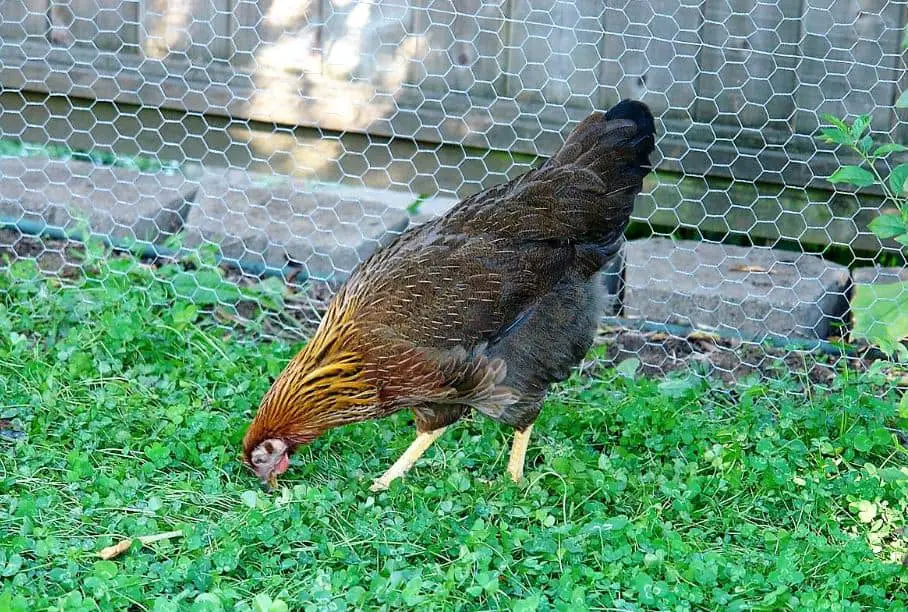
The Welsummer breed of chicken has existed for only slightly less than 100 years. They lay brown-colored eggs.
People created this breed near the village of Welsum near Deventer, in the Netherlands. This breed was used as a utility bird post-World War I era.
The Welsummer breed has a lifespan of approximately 9 years of age. It is a beautiful and strong chicken with beautiful feathers that gleam in the sunlight.
An upright stance, with a flat and long back, characterizes them. Welsummers have a large comb, usually bright red, and their legs are yellow, which fades into summer.
The Welsummer chicken breed is also known as a “continental” class breed; we define them as large birds of continental European origin.
Welsummer chickens are very common chicken breeds in Australia’s urban and rural locations because of their calm and friendly temperament.
The Welsummer chicken breed produces around 160-250 brown eggs per year. However, the higher the output of eggs, the less the purity of the breed.
2. Barred Rock Chicken
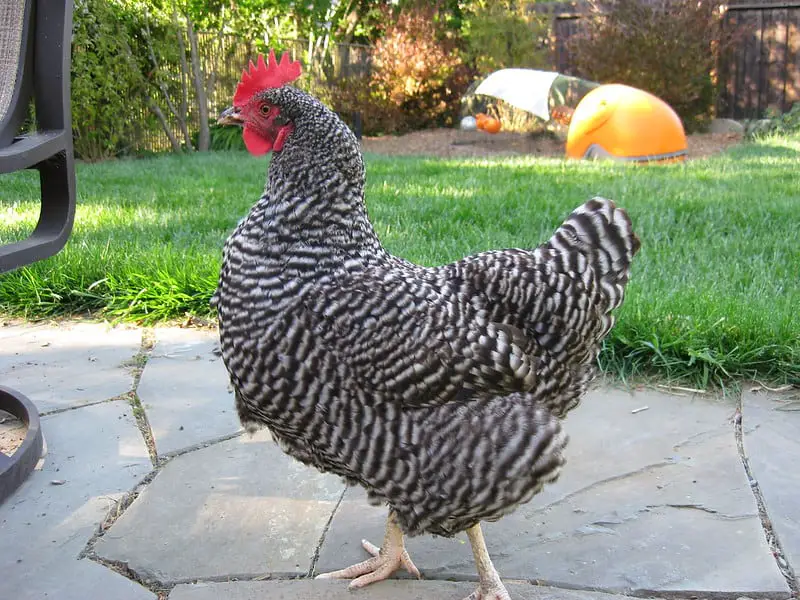
The Plymouth Rock is a domestic chicken breed in America. This breed of chicken was first seen in Massachusetts in the nineteenth century. In the early twentieth century, this breed was the most popular and demanded chicken breed in the United States.
A single comb with five sections characterizes the Plymouth Rock breed; the comb, wattles, and ear-lobes are bright red. Its legs are yellow and are unfeathered.
The beak The Plymouth Rock breed is yellow or horn-colored. They usually have long, broad backs and moderately deep and full breasts. Their feathers are comparatively looser than those of other chickens, and they lay brown eggs.
The Plymouth Rock serves as a dual-purpose breed, and we use it for large brown eggs and meat consumption. This chicken breed lays around 200 large brown-colored eggs per year.
In Australia, the Barred variant is available in separate colors, Dark Barred and Light Barred.
3. Marans Chicken
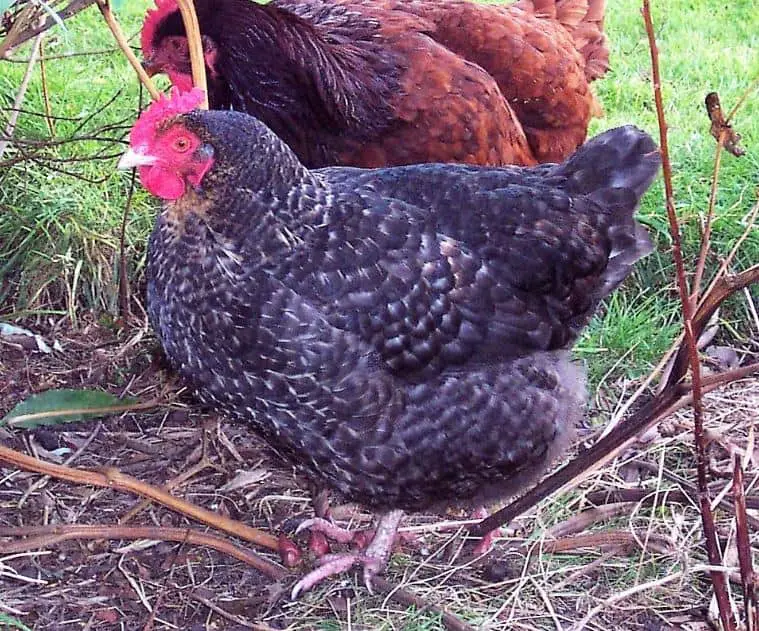
There are 9 colors of the chicken breed in the French standard: cuckoo, golden cuckoo, birchen, black, black copper, black-tailed buff, wheaten, white, and Colombian.
Black copper (black with copper feathers on the neck) and cuckoo (barred feathers, which give it a black and white speckled appearance) are the most common breeds. Other colors like blue, copper, blue, and splash also exist, but you will not see them often.
This breed of chicken lays around 150–200 dark brown eggs annually. It depends upon the variety of the breed. Marans are historically a dual-purpose bird; they are popular because they produce dark eggs and have table qualities.
4. Penedesenca Chicken
This breed of chicken has Spanish origins and originated in Catalonia. This breed lays dark eggs. In 1932, near Vilafranca del Penedès, backyard chicken keepers used selective breeding to produce this breed.
Also, they worked towards refining these egg layers. After a few years of work, the backyard chicken breeders created the Penedesenca chicken.
This is not a large chicken. This breed of chicken usually has a small size, which helps them to stay cool. Penedesencas chickens are typically found in hotter climates. Penedesenca roosters weigh around 5 to 6 pounds, and the hens weigh about 4.5 pounds.
These beautiful Spanish Penedesenca breeds of chicken lay very dark brown eggs. These eggs are so unique that they become one’s favorites.
Thus, the breed produces around 3 eggs per week and about 156 deep brown-colored eggs per year.
5. Barnevelder Chicken
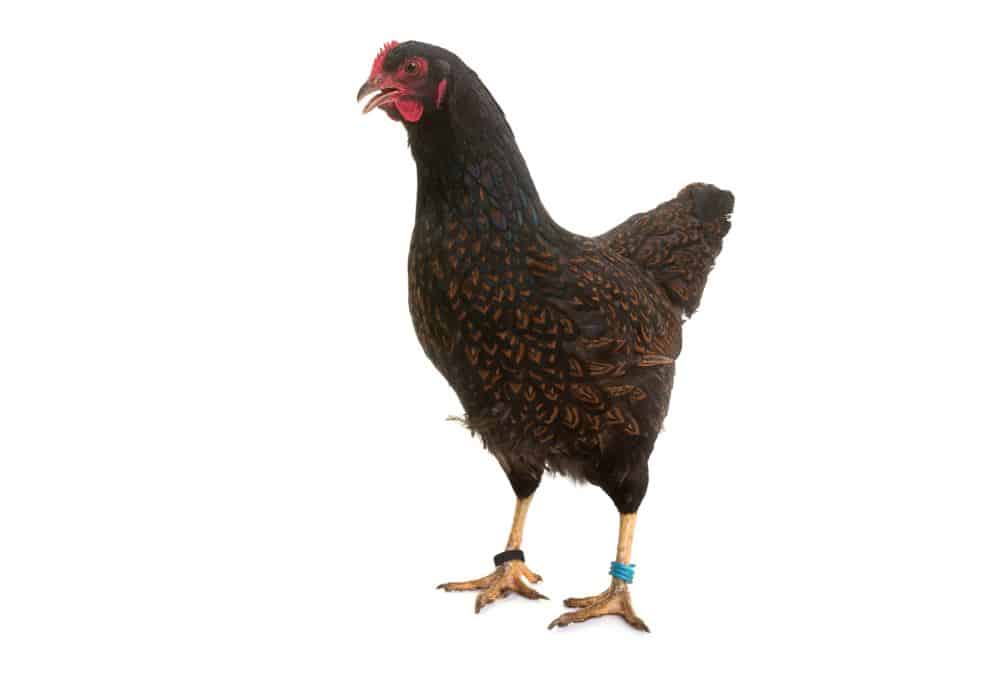
The Barnevelder is a domestic breed of chicken of Dutch origin. It resulted from crossbreeding between local Dutch chickens and “Shanghai” birds imported from Asia to Europe during the nineteenth century.
The Barnevelders are heavyweights and are dual-purpose chickens, which not only lay eggs but also yield a reasonable carcass.
They are hardy birds and are good foragers, known for their dark “chocolate” brown eggs. Also, this beautiful bird is quiet and prefers to be confined.
The original variety of Barnevelder is the double-laced variety, which has a single vertical comb, and its legs are yellow. Still, some other varieties of this breed also exist.
The Barnevelder breed of chicken lays around 3–4 large brown eggs per week and around 175–200 brown eggs annually. The eggs weigh about 60–65 g. People call these types of eggs dark chocolate and occasionally speckled.
Also Read: Black Chicken Eggs: Real or Fake
Facts about Chicken Purple Egg
No chicken lays an egg of any color, a true purple. Eggs get a protective barrier on their outside called “the bloom,” which helps eggs stay fresh or germ-free.
A few hens lay brown eggs to heavy bloom, which can tint a purple egg. Whenever the bloom is cleaned off, an egg becomes brown.
So, unfortunately, no breed of chicken lays genuinely purple eggs. When your eggs look purple, the blame for that is the bloom.
Bloom is an external protective layer of its egg that helps to prevent germs from entering a shell. It certainly keeps the eggs fresh, too.
Benefits of Chicken Colored Eggs
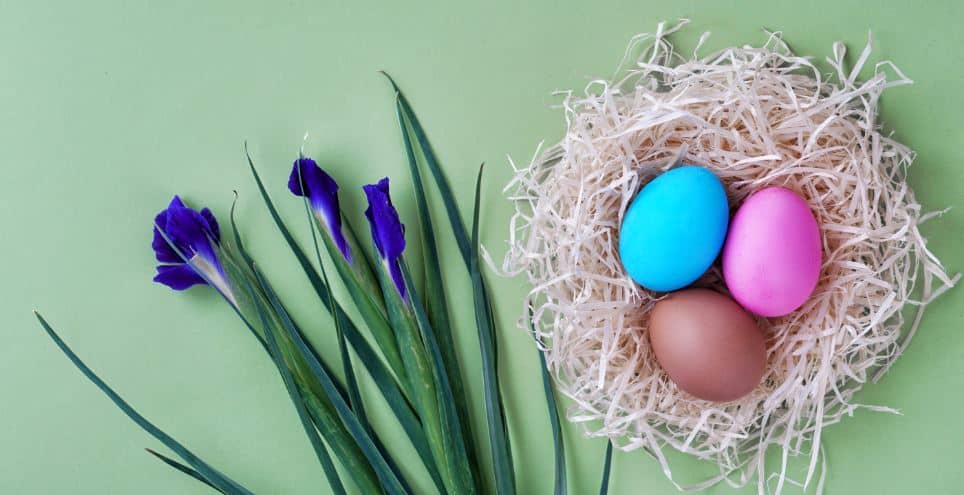
No, there is no distinction between edibility, wellness, and nutrition through the shells of eggs of distinct colors.
It is said that colorful eggs in your backyard will provide far more nourishment, as eggs generated by hens elevated on pasture are much healthier (or taste so much better).
Both white and brown eggs are wholesome foods. The typical egg contains excellent quality essential vitamins, metals, or proteins, all wrapped in much less than 80 calories.
Researchers, however, have contrasted brown-shell eggs with those with white shells to see whether there is any distinction. A few studies have found that shell color does not significantly affect egg quality or composition.
This means the color of an egg or even an eggshell has less to do with how nutritious it is. The only other major difference here is the shell pigment.
Certain factors may affect an egg’s nutritional value.
A change in the climate of the hen could have a considerable impact. For example, eggs from hens that may roam throughout the sunshine contain 3-4 percent of the vitamin D found in eggs from conventionally produced hens.
The form of feed a hen eats can also affect the nutritional content of her eggs.
Hens fed a rich diet of omega-3 fatty acids produce eggs that contain omega-3 fatty acids far greater than usual. Vitamin D has the same impact when chickens eat D-enriched feed.
Also read: Black Chicken Eggs: Real or Fake ‘Let’s Find Out’?
Conclusion
You are not alone, Whether it involves using your backyard flock to produce basket chicken egg colors. Many people are keen to explore this phenomenon! You must decide if it’s worth it.
Besides, we can say that a green egg tastes much like a white egg at the end of the day. Eating colorful eggs truly does not have additional nutrient value.
However, if you are after a rainbow of color schemes through your egg basket, these chicken egg colors by breed can help make your dreams come true!
So, when you choose your next breed of chicken, why don’t you add color to your basket of eggs?
I hope you liked this article on chickens that lay colored eggs. Thanks for reading.


Leave a Reply